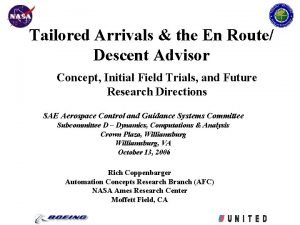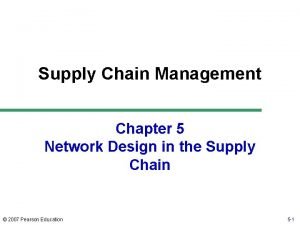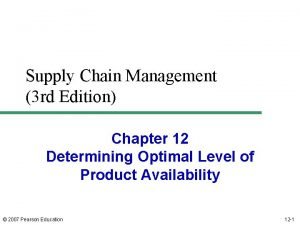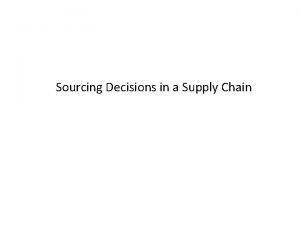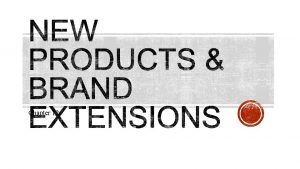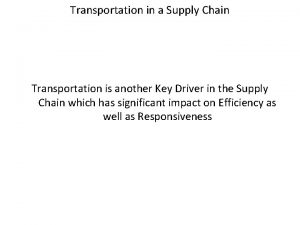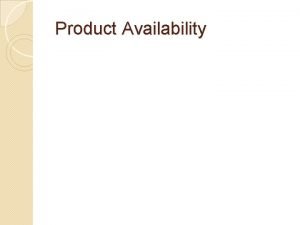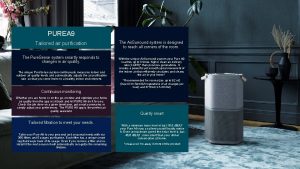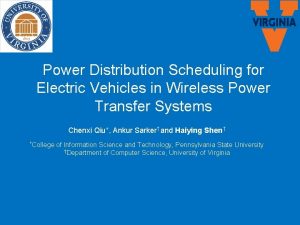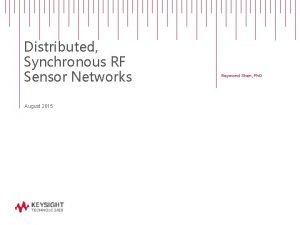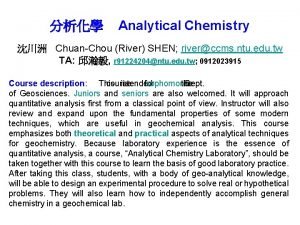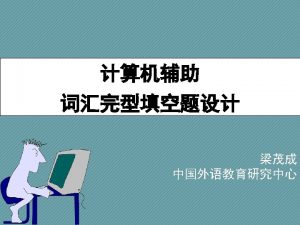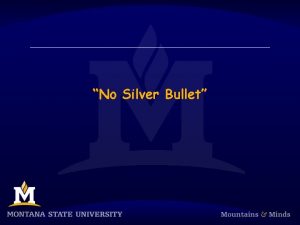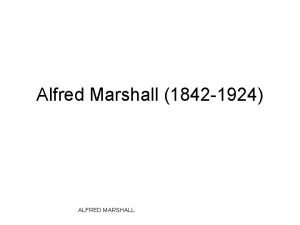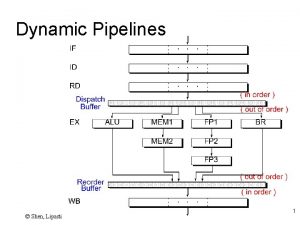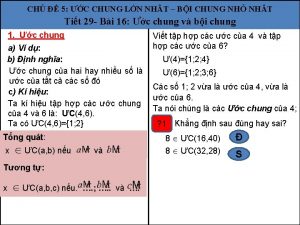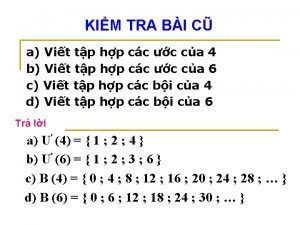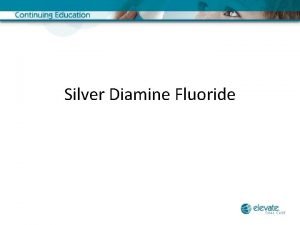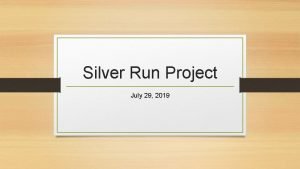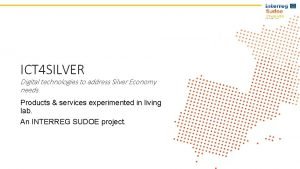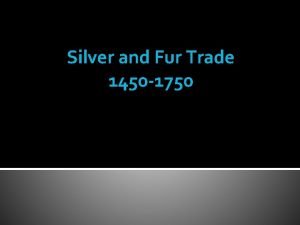Tailored Products Group Analysis Silver Chung Marshall Shen



















- Slides: 19

Tailored Products Group Analysis Silver Chung Marshall Shen

Introduction of TPG products

Tailor Product vs. Standard Product § Company has a set of furniture portfolios for chairs, desks, etc, with specific size and colors. § But sometimes customers request a slight change based on the standard products. v “Can you make this chair 2 inches higher? ” v “Can you paint this desk black and gold? I am a proud Hawkeye!”

Tailored Product Cont’d § Allsteel received the request from the customers, and they make decision whether to accept/deny the business

Project Overview § So, what’s the problem: “It’s cool that we are making Tailored Products for out customers, but… Are we making profits on TPG? What are the right strategies for TPG market?

Statistical Analysis

Questions we want to answer: Who are buying Tailored Products? -There are four major customer types in our dataset: 1) Dealer 2) Federal Government 3) Direct 4) State How likely is it for each customer types to purchase Tailored Products? - We fit logistic regression to analyze our data.

SAS Code (logistics within GEE) proc genmod data=INVOICE_2010 descending ; class DEALER FEDERAL DIRECT STATE NUM_CUST_BAS CLASS; model SPECIAL = CLASS / dist=binomial link=logit type 3 alpha=0. 05; repeated subject= NUM_CUST_BAS / type=cs; output out=INVOICE 2011_OUTPUT 2 p=pred lower=low upper=up; ESTIMATE 'DEALER vs. DIRECT' CLASS 1 0 0 -1 /EXP; ESTIMATE 'DEALER vs. FEDERAL' CLASS 1 -1 0 0 /EXP; ESTIMATE 'DEALER vs. STATE' CLASS 1 0 -1 0 /EXP; ESTIMATE 'FEDERAL vs. DIRECT' CLASS 0 1 0 -1/EXP; ESTIMATE 'STATE vs. DIRECT' CLASS 0 0 1 -1/EXP; ESTIMATE 'FEDERAL vs. STATE' CLASS 0 1 -1 0/EXP; run;

SAS Output Year 2010 Parameters Customers Class 1 Dealer Class 2 Federal Class 3 State Class 4 Direct

SAS Output 2010 (logistics within GEE) Customer Class P(special orders) Dealer 0. 0344 Federal 0. 0446 State 0. 0282 Direct Output 2011 0. 0839 Customer Class P(special orders) Dealer 0. 03801 Federal 0. 05844 State 0. 03215 Direct 0. 07852

Next question to answer: what is the percentage of TPG inside special orders? We tried to applied normal linear mixed model to incorporate the correlation within same division (one customer might have multiple special orders) SAS code: ODS html; ods graphics on; proc mixed data=PERCENTAGE 2 method=reml covtest plots=boxplot(student); class DEALER FEDERAL DIRECT STATE NUM_CUST_BAS CLASS; model SPECIAL_DOLLAR_PCT = CLASS / solution cl influence(effect=NUM_CUST_BAS est)outpm=PAfit outp=SSfit residual ; random intercept /subject=NUM_CUST_BAS; repeated/type=cs subject=NUM_CUST_BAS ; ODS output influence=influence 1; ods output solutionr=solutionr; run; ods graphics off; ODS html close;

SAS Ouput

BUT WAIT…We need to check the assumption… Our model assumes that the error follows a normal distribution, but does it? The assumption for normality is voilated.

We need a better model that doesn’t require normality assumption: Semi-Parametric Model using GEE SAS Code: ODS html; ods graphics on; proc genmod data=PERCENTAGE 2 plots=all; CLASS NUM_CUST_BAS CLASS; model SPECIAL_DOLLAR_PCT = CLASS; repeated subject=NUM_CUST_BAS / type=cs ; run; ods graphics off; ods html close;

SAS Output

SAS Output (Cont’d)

SAS Output (Cont’d)

Conclusion & Future Work § The likelihood for different customer classes to have special orders is different § The likelihood for customers to have special orders are generally increasing from 2010 to 2011. § The percentage of TPG products inside invoices is statistically different for different customer classes. § Due to the nature of the data set, we need to find a better statistical model 18

Questions?
 Chien-chung shen
Chien-chung shen Chúng tôi đứng trên núi chung
Chúng tôi đứng trên núi chung Silver chung
Silver chung Silver carpet bedroom
Silver carpet bedroom Example of chemical change
Example of chemical change Tailored arrivals
Tailored arrivals Facility role in network design
Facility role in network design Tailored sourcing supply chain
Tailored sourcing supply chain Benefits of effective sourcing decisions
Benefits of effective sourcing decisions Levi's tailored classics failure
Levi's tailored classics failure All shipments via central dc example
All shipments via central dc example Available product
Available product Tailored air
Tailored air Functional products examples
Functional products examples Marketing mix de coca cola
Marketing mix de coca cola Shen, wei-min
Shen, wei-min Haiying shen
Haiying shen Qun shen
Qun shen Raymond shen
Raymond shen River shen
River shen





